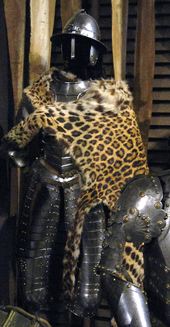Battle of Moscow (1612)
| Battle of Moscow | |||||||
|---|---|---|---|---|---|---|---|
| Part of Polish–Russian War (1605–1618) | |||||||
| |||||||
| Belligerents | |||||||
|
|
| ||||||
| Commanders and leaders | |||||||
| Jan Karol Chodkiewicz | Dmitry Pozharsky | ||||||
| Strength | |||||||
| 10000 | 10000 | ||||||
| Casualties and losses | |||||||
| 1500 | 1500 | ||||||


The Battle of Moscow was a series of two battles, which took place in Moscow, on September 1 and 3, 1612, during the Polish–Muscovite War (1605–18). Forces of the Polish-Lithuanian Commonwealth were commanded by Field Hetman of Lithuania, Jan Karol Chodkiewicz, while Russians were led by Dmitry Pozharsky. The battles ended in tactical Russian victory.
First Battle
On September 1, 1612, Polish-Lithuanian forces unsuccessfully tried to break the siege of the Moscow Kremlin, and rescue the Commonwealth garrison under Mikolaj Strus, which was kept there. To achieve this, they attacked from west, towards the suburbs of Moscow. Polish hussars, backed by Polish, Hungarian and German infantry, managed to break Russian lines. At the same time, however, right wing of the Commonwealth forces was exposed, which was immediately noticed by Don Cossacks (allied with the Russians) of Dmitry Trubetsky. Their cavalry attacked, managing to disperse Polish-Lithuanian forces. At the same time, Commonwealth units in the Kremlin tried to attack Russian positions, but also failed. On this day, both sides lost some 1000 men.
Second Battle
On September 3 Chodkiewicz decided to attack Moscow via its southern suburb, the Zamoskvorechye District. Some 600 Hungarians infantrymen managed to reach the walls of the Kremlin. They were followed by main Commonwealth units, which however were halted in the narrow streets of the district. After a Russian counterattack, Chodkiewicz ordered a retreat, losing several hundred men.
Outcome
Both battles ended in tactical victory of the Russians. They managed to repel the Commonwealth army, and the garrison of the Kremlin, which had run out of supplies, capitulated on November 7, 1612. News of the capitulation reached Polish King Sigismund III on December 8 at Volokolamsk, less than 30 kilometers away. Upon finding out about this, the king, who was on his way to help the garrison, decided to halt the march and head back to Poland.
Sources
- Andrzej Andrusiewicz, Dzieje Dymitriad 1602- 1614, t. I, II, Warszawa 1990
- Tomasz Bohun Moskwa 1612, Wydawnictwo Bellona 2005 ISBN 83-11-10644-4